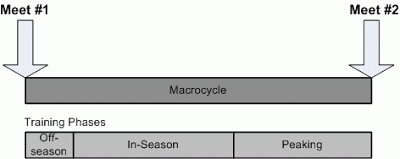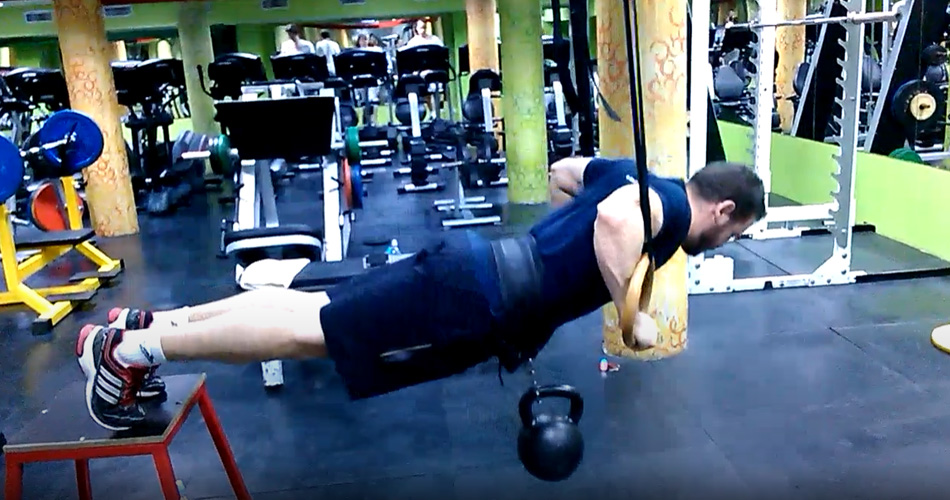Analysis of Reactive Training Systems
Although I have promised in Periodization confusion article that I am going to make a real-world practical example on planning the preparatory period for 8-week long pause between the two halves of the soccer season, I am first going to make another example by ‘dissecting’ Reactive Training Systems (RTS) by MikeTuchscherer based on the slides and material from Progressive Powerlifting Seminar which was held in 2008. Mike certainly evolved his really good system even more, therefore take a look at this only as an example of what I talked about in Periodization confusion article. Please note that RTS is aimed at ADVANCED powerlifters.

Advanced Powerlifters
The crux of RTS is autoregulation of training load based on RPE (how hard does the set feel, or proximity of failure) and fatigue percents (the way to regulate training stress). I am not going to expand on this further, since I covered that in Planning the Strength Training series of articles, and Tuchscherer covered it extensively in Reactive Training Manual (which I am going to re-read) and in free articles on his website. It could be said that autoregulations and fatigue percents are the training principles utilized in the Third Level of planning strategy.
One interesting concept is RPE chart, which should be custom tailored and provides an insight into correlations between RPEs and reps at certain percentage of 1RM. This chart is ‘consulte’ when programming your workouts in a certain phases that demands certain intensity percentage and/or certain RPE zone.
The system also revolves around weekly template, which can be flexible based on your obligations and needs, and can also be modified whether you are in Frequency or Fatigue cycle (more on this in already mentioned sources).
The basic template includes:
| Monday (squat/deadlift) | Tuesday (Raw Bench) | Thursday (deadlift/squat) | Friday (shirt bench) |
|---|---|---|---|
|
1. Equipped Squat Variation (ex, Suit Squat, Bands, Chains, etc) 2. Deadlift Assistance (ex, Reverse Band DL, Pause DL, alternate stance, etc) 3. Squat Supplement (ex, SSB Squats, Hi-Bar Oly Squats, Pause squats, etc) 4. Abs |
1. Main Raw Press (Raw Bench, Ply Press, Pause Bench, etc) 2. Raw Assistance (Close Grip, Moderate chain usage, long pauses, etc) 3. Shoulders (Incline, Military, etc) 4.Lats |
1. Main Deadlift Variation (Deadlift, Chains, Bands, Gear, etc) 2. Raw Squat Variation (Box Squat, varied depths, moderate chain usage, Squat, etc) 3. Deadlift Supplement (SLDL, GM, RDL, etc) 4. Abs |
1. Main Lockout Variation (Shirt Bench, Bands, Chains, Full ROM, etc) 2. Lockout Assistance (Bands, Chains, some partial ROM) 3. Lockout Supplement (Partial ROM for higher reps) 4. Lats |
It is important to stress that, in the days between, the lifter is doing GPP work that includes single leg lifts, upper body pulling and pre-hab work, stretching and conditioning.
Tuchscherer uses its own classification of exercises, which he adapted to the sport of powerlifting:
| Squat | Deadlift | Shirted Bench | Raw Bench |
|---|---|---|---|
|
Equipped Squat variation Raw Squat variation Squat Supplement |
Primary Deadlift Secondary Deadlift Deadlift Supplement |
Shirt Bench MainShirt Bench Assist Triceps |
Raw Bench MainRaw Bench Assist Shoulders |
It is clear that Tuchscherer utilizes certain exercise classification system based on the similarity with the competition lifts-, and since I wanted to give an example for Periodization Confusion article, I will need to bastardize this a little bit, to fit it into Bondarchuk’s classification system (I probably did make some errors, and I will accept recommendations for this classification):
| Competitive (CE) | Specialized Developmental (SDE) | Specialized Preparatory (SPE) | General Preparatory (GPE) |
|---|---|---|---|
| Geared squat, deadlift and bench press |
Squat Assistance Deadlift Assistance Equiped squat variation Equiped deadlift Variations Equiped bench press variations |
Raw Bench PressRaw Bench Assistance Shoulders Triceps Lockout Supplement Raw Squat variations Deadlift supplement Squat supplement |
Abs LatsGPP work |
CEs are the competitive movements with full gear and competitive ROM. SDEs are slight variations of CEs to emphasize certain performance aspect and weakness (based on the analysis). SPEs are movements that hit same muscles in similar function. GPEs are general exercises targeting neglected muscle groups and aimed at rising of general physical preparedness.
You will see soon why this classification is important.
To further explain RTS, we will need to take a real world situation. Mike Tuchscherer calls this Cycle Design. Similar to First Level of planning, one needs to chart down meet dates, travel, vacation and other things that are fixed and which provide constraints for further planning. Based on this basic Annual Plan, further macrocycles are designed. Each macrocycle is a time period between two (major) meets.

For each macroycle, there should be S.M.A.R.T. goals set for total and each individual lift, also based on strengths~weaknesses analysis (which is similar to SWOT analysis in strategic planning) and time and environmental constraints (context). After this process, each macrocycle is further split into training phases.

In European terminology, training phases are usually (1) preparatory period, (2) competition period and (3) transition period and in American terminology they are (1) off-season, (2) pre-season and (3) in-season. This is not set in stone and it is based on the situation at hand. Mike Tuchscherer utilized his own names for training phases based on the sport of powerlifting and individual characteristic of each phase.
Each phase has its own characteristics (and goals) and thus can be considered a blend between Second and Third level of planning.











Responses